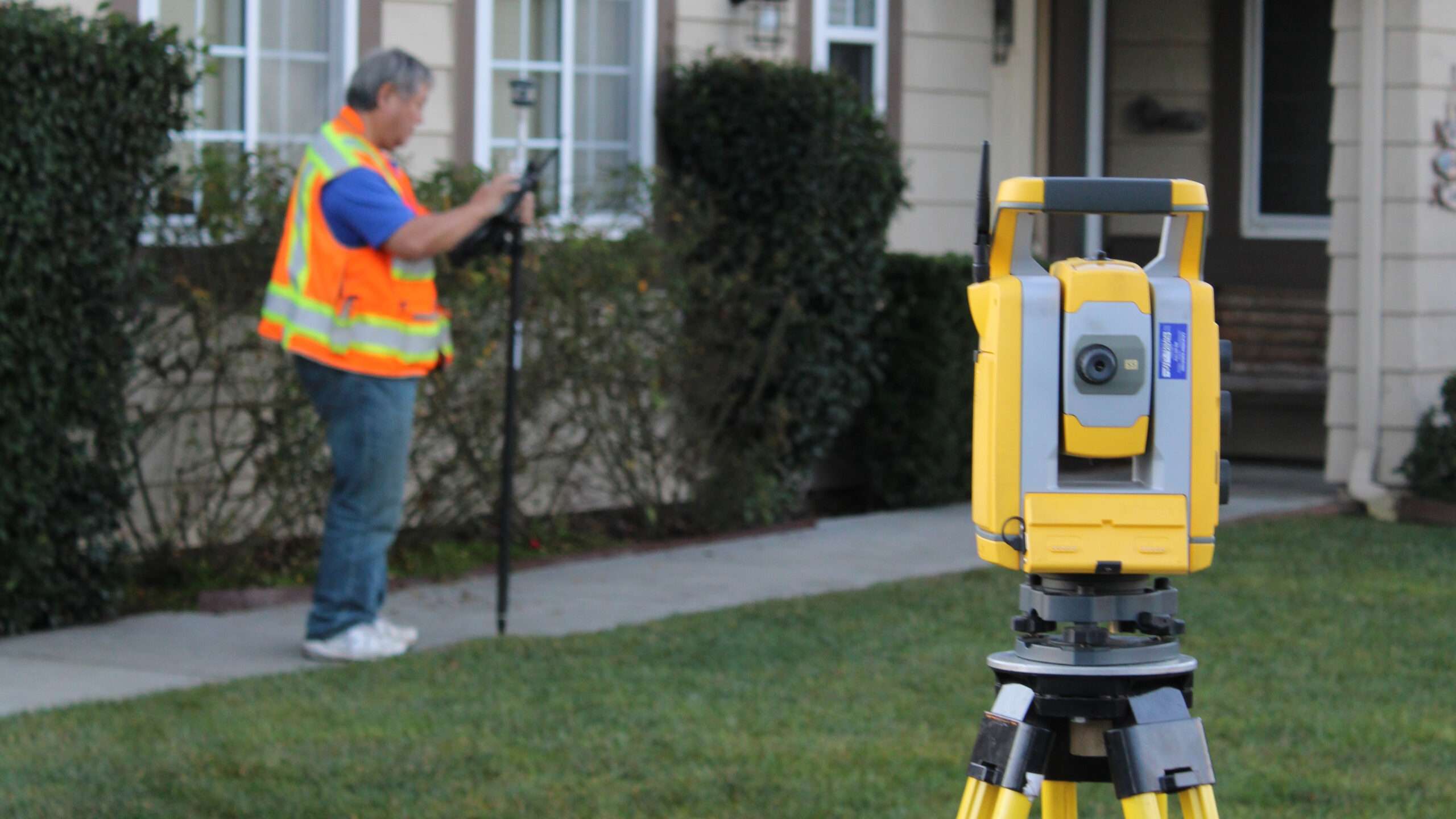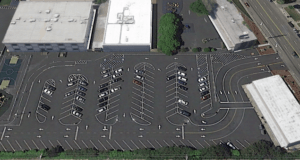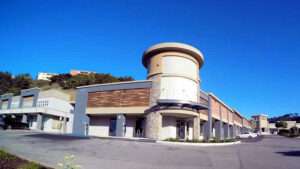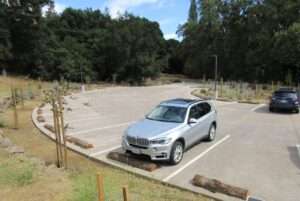Chances are, at some point in your life, you passed a building site or an open lot and saw a person in a construction hat and vest, squinting at a box on top of a tripod. You probably wondered: what exactly is that person doing? That person is a surveyor, and they have a significant role in just about any built project you see in the world. Without them, engineers and architects would not be able to design or plan structures that are safe and functional.
U&R is unique in offering surveying services in-house alongside our civil engineering capabilities. Our surveyors are a busy team and we are always on the lookout for new talented professionals to join us. But we understand for many people, surveying is probably a mysterious occupation. We wanted to take some time to de-mystify this important role. To help us, we spent some time chatting with David Tabuchi, Survey Technician at U&R, to give us a glimpse into a surveyor’s life as well as some thoughts on the importance of the job.
In brief, what does your job as a surveyor entail?
“A surveyor is making a 3D map of a given area with some very sophisticated technology. The goal is to gather as much accurate data as possible about all existing conditions at the site. Once you go out and gather the data with your instruments, you take it back to the office, download and translate the information through AutoCAD, and hand the survey off to engineers so they can use it to determine the best place to plan and design a project.
For me, it feels like being an artist – you are putting together an information-rich, detailed snapshot of a piece of land or area for someone to interpret and build upon.”
What does a typical day look like for you as a surveyor?
“Once I get my job assignment, say for a school, I will drive out to the site, and use my tools to start gathering data about the site. This involves using what’s called a total station – an optical instrument that uses a laser and is placed on a tripod. I also use a rod with a 360-degree reflective lens that communicates with the laser. First, I’ll walk the whole site to gain an understanding of the existing conditions. Then I will start placing points on the ground to use as reference points for my data gathering.
To create a ground survey, we’re going to be looking at a lot of things, such as slopes around hillsides, grades around existing buildings, existing hardscapes, etc. When we are scanning the site, we utilize an extensive list of codes that record hundreds of different conditions in the field. The system we use has about 600 codes to cover every imaginable feature or scenario.
A smaller survey can take less than an hour, but a larger one can take a few days, even with a team. When I finish data gathering in the field, I will go back to the office, download the data and produce the survey in AutoCAD to send to the engineers.
The job is a mix of being outside and being in the office, so it’s great to have a change of scenery, to get outdoors, and do something active. It’s also a mix of working by yourself and with people, so it’s a job that has great balance.”
What is the surveyor’s importance to the overall engineering or construction project?
“It’s our job to get accurate information by collecting raw data in the field. We need to be able to pick up all essential details, like property boundaries, so the engineers know exactly what to do. There can be big implications down the line if that data is not accurate.
That’s why having civil engineers and surveyors working in the same office is ideal. Surveyors will draw up the work, and if the engineer needs something else, we can react immediately. This results in work getting done much faster and the process being much more seamless.”
What is your background and how did you end up working as a surveyor?
“It was a career pivot for me – I had been in retail for 20 years and suddenly found myself unemployed and looking for something totally different. I had always been pretty comfortable with computers and technology, so that gave me a running start.
I did learn everything on the job, but for anyone interested in pursuing surveying, there are programs and courses you can take. You can also study surveying as a part of a civil engineering course.”
What do you think are some important skill sets for young people to bring to the job to be a good surveyor?
“A surveyor is using technology and tools pretty much 100% of the time. So you really should bring a good understanding of technology and computers and have a curiosity about how things work so you can learn new tools. You also need to be willing to adapt, as GPS and other advances are changing the industry every single day.
Ideally you will like working both indoors and outdoors as well as working with people, and you are someone who is responsible and dedicated. The job requires a lot of attention to detail and has some deadline pressure but is very rewarding.”
Interested in becoming a surveyor, or joining U&R’s surveying team? Reach out for more information at [email protected] and visit www.uandr.com/contact/ for our open positions.




